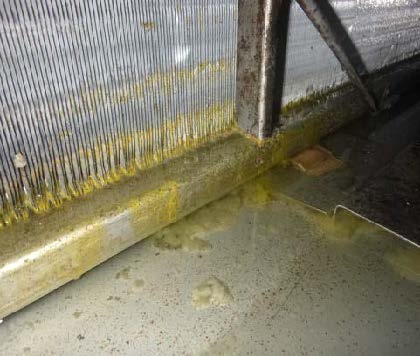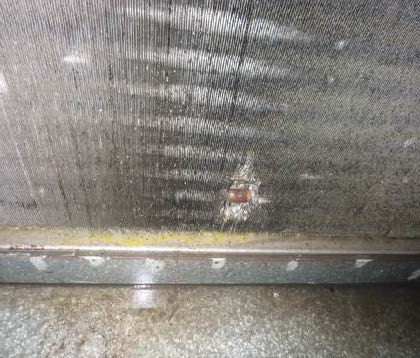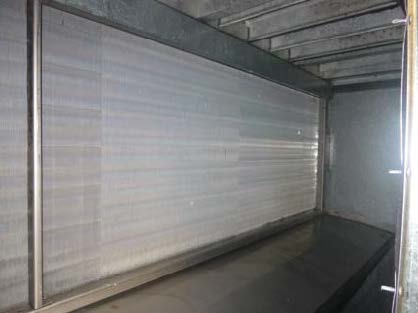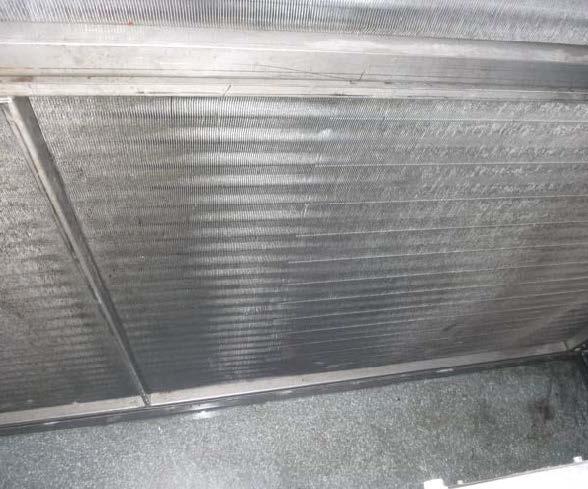AHU COIL CLEANING AND MAINTENANCE
Air Restore has a comprehensive understanding of the issues involved with contaminated coils. If cooling coils are well maintained they will help protect occupant health and improve system performance, lowering energy consumption.
Coil Cleaning
In Queensland’s hot, humid climate, cooling coils allow microbial growth and dissemination of microorganisms and their by-products throughout a building. As air entering the building passes through the coil, it deposits dust on the fins. This dust, combined with condensation and moisture produced by the everyday running of the cooling coils, is at risk of biofilm growth.
Fungal contamination of cooling coils is also a common problem. Fungal spores can be released into the airflow from coils, contaminating downstream air conditioning components and the building air.
It’s essential to start reasonable cleaning procedures as soon as coils are put into operation.
When you look at an installed cooling coil, you’re only visualising a section of the surface area the air passes over; dust and biofilm generally build up in the centre of the unit in the direction the air passes. So if coils are cleaned only upon a visible dust build-up, you’ve likely got a contamination issue, and your cooling system isn’t running efficiently.
Filtration efficiency, hours of operation, use of the building and location must be considered when determining how often individual installations require cleaning. Regular inspection is recommended to choose the time frame for cleaning and sanitising coils.
- Reduce energy consumption and save money A clean and well-maintained coil will reduce your energy consumption by up to 30%, according to AIRAH.
- Increase Equipment Life Cycle. Coils that are not regularly maintained are likely to perform poorly. In other words, other parts of the air conditioning system will have to work harder or longer, resulting in reduced life cycles.
Therefore, thorough coil cleaning will increase the equipment’s life cycle, eventually saving you money.
- Improve Indoor air quality
Air Restore Coil cleaning service will destroy up to 99.9999% of bio-contaminants, including strains of viruses, bacteria, mould or fungi. So rest assured that your customers and staff will benefit from clean air.
We don’t recommend cleaning coils yourself, but you should inspect them regularly to ensure they look clean. A visual inspection will give you a decent general indication of when to clean them. Still, if you’re managing a site that serves critical environments (like a hospital, dentist’s office or lab), you’ll want to take a more technical approach to maintain good air quality. Measuring the differences in temperature entering and leaving the coil and comparing this to your benchmark of optimal temperature differentials will help.
At a minimum, we recommend conducting a visual inspection of your cooling coils at least once a month. In addition, the Australian Standard AS/NZS3666.2:2011 Air Handling & Water Systems of Buildings – Microbial Control stipulates that coils in the air handling system should be inspected monthly and cleaned when necessary.
There’s a bit of contention in the HVAC industry about how often coils need to be cleaned – currently, there’s no minimum requirement for cleaning. However, industry bodies, governments, and businesses are hosting discussions about the best way to determine minimum requirements.
The honest answer is there’s no easy solution. Every building is different; every HVAC system is unique, and there are different types of coils in your HVAC system. All these interconnected elements also take air in from other outdoor conditions and serve different indoor spaces, which may have additional requirements. So, many variables can make it a pretty complex task to offer a standard solution to fit everyone.
AIRAH, the independent industry association for air, is also updating Design Application Manuals to assist with HVAC&R Maintenance, which is due to be released later this year. In addition, you may find AIRAH’s publications helpful in determining your coil cleaning schedule.
BEFORE


AFTER

